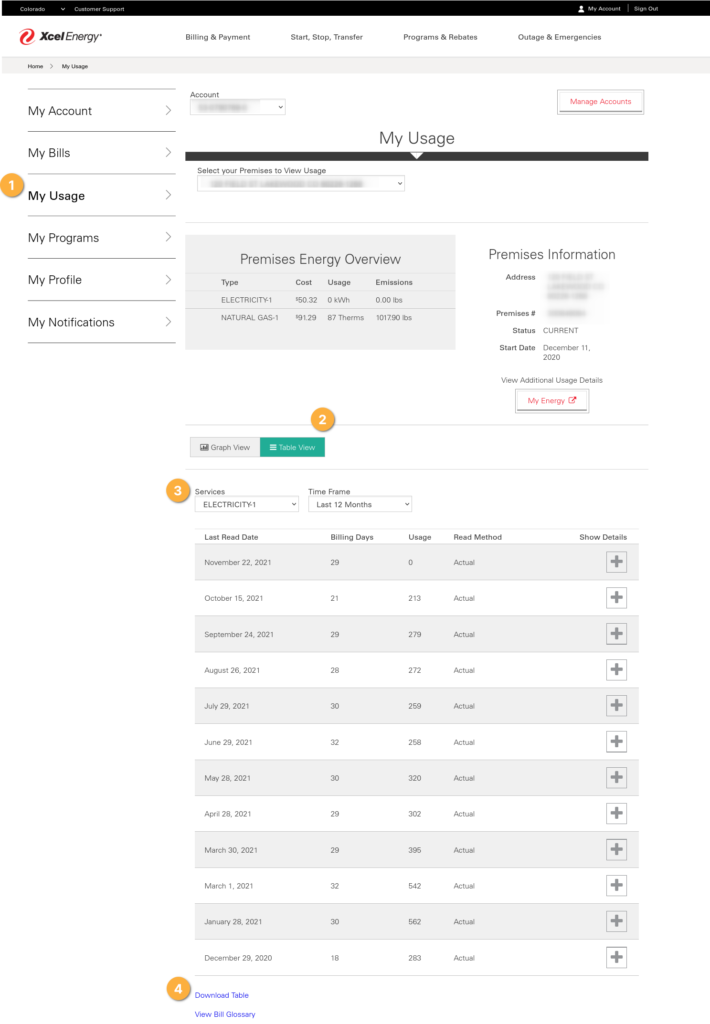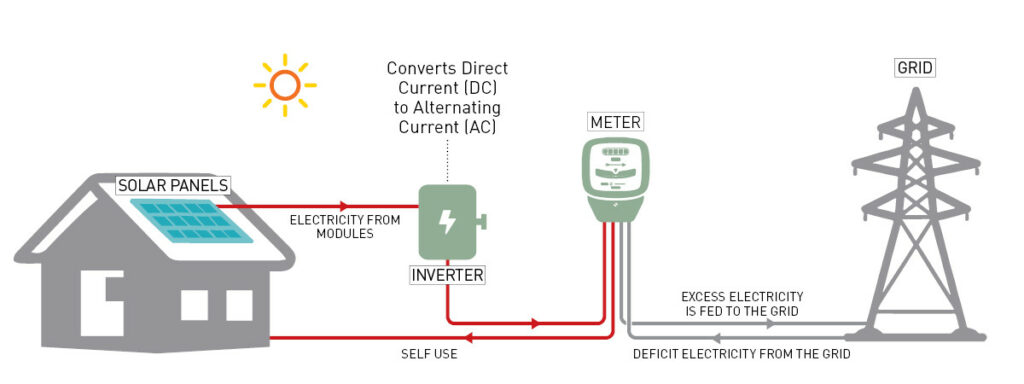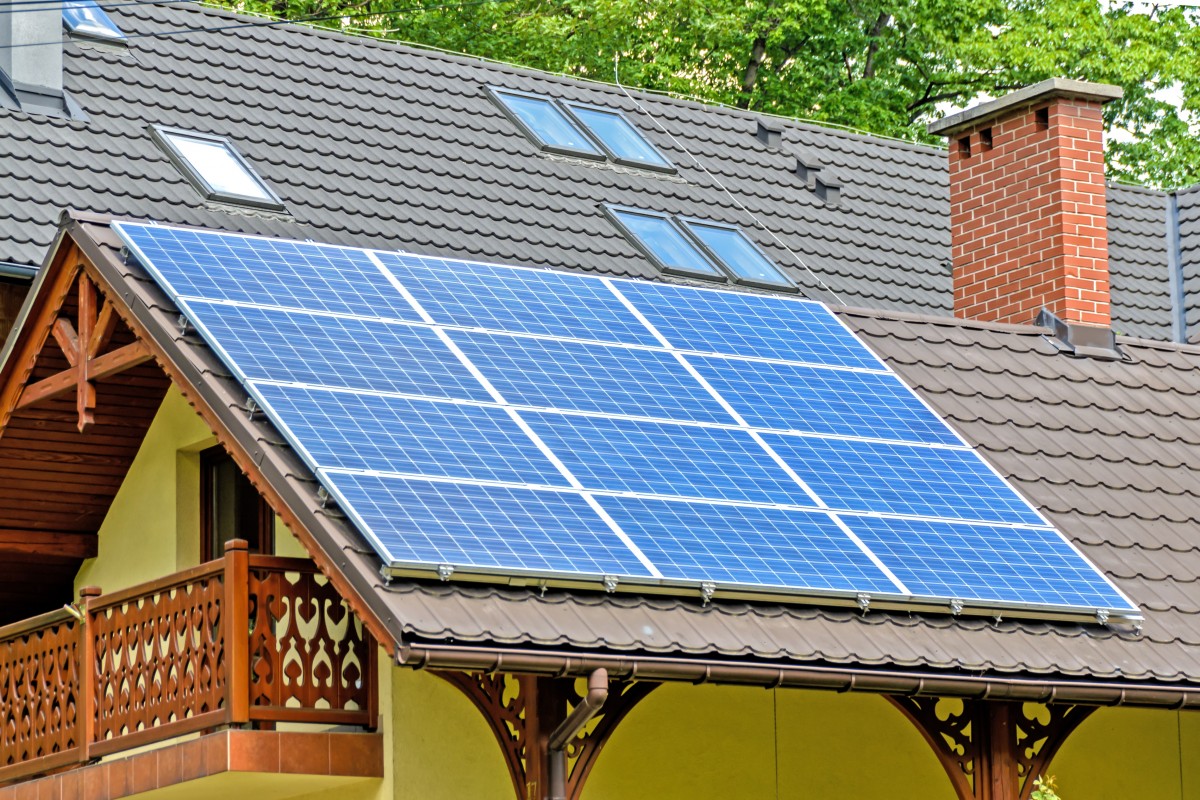Living in one of the sunniest areas of the country, installing solar panels on your home can be a great way to save money, reduce air pollution, address climate change and improve the electric grid’s resilience.
If you own your home, the first step is doing some research. If you rent, then start a conversation with your landlord.
Step One – Research
Visit Project Sunroof and enter your address to get an initial idea of if your roof is good for solar. Bright orange roofs (no shading, south facing) that aren’t broken up into lots of smaller faces make for great roofs.
Next, look up your average electricity usage by logging into your Xcel Energy Account at https://co.my.xcelenergy.com/s/
- Visit your My Usage page
- Look at the Table View
- Choose Electricity in the Services select list
- Click the Download Table link below the table

For reference, most homes use 5-8,000 Kilowatts per hour in a year.
Now, visit the PVWatts Calculator to get an estimate on how much you would save with rooftop solar.
- Step 1: DC System Size – This is what we will change to see how big a system we may need. Start with 4.
- Step 2: Module Type – Premium (All panels sold today are premium)
- Step 3: Array Type – Fixed (roof mount)
- Step 4: System Losses – 14.08 (standard, don’t change)
- Step 5: Tilt – 20 (Keep at 20 unless you know the average tilt of your roof)
- Step 6: Azimuth (deg) – If you know which part of the roof your panels will likely go on, put that degree. East: 90, South: 180, West: 270. If multiple multiple panes may be used, use the biggest roof space for the best guess.
- Step 7: Click the advance arrow.
- If the output kWh in the top right corner matches or is higher than your average annual use from your Xcel bill, that is the size of the solar system you will need. If not, go back and increase the DC system size.
Most rooftop solar systems cost $15-25,000 with a return on investment of 7-10 years (before the federal tax credit of 26%).
A 15-20 year loan oftentimes ends up right at your monthly electric payment or less. So you can probably make the switch without extra cost and might even begin immediately saving!
If it turns out rooftop solar is a good fit for you, then it’s time to find a contractor.
Step Two – Find a Trustworthy Solar Contractor
As is true for any major purchase, it’s wise to shop around and get multiple quotes from companies. Ask your neighbors with panels who they worked with and if they’d recommend them. You can also review companies at https://www.solarreviews.com/solar-companies/colorado. However, prepare yourself for lots of calls from solar companies if you do this.
A 5-10 year warranty is typical. Panels and Inverters carry a manufacturers warranty of 25 years. Most solar installers will have a workmanship warranty of 5-10 years, after which you may have to pay for labor to replace any defective parts. However, you won’t have to pay for the parts themselves for 25 years.
Also, ask what the degradation rate is for the panels the contractor will use. The degradation rate is a good indicator for the quality of the panel. Panasonic panels, for example, remain more than 92% effective after 25 years, meaning they lose less than 8% of their original efficiency after 25 years.
Each contractor will run an assessment to determine how many solar panels are best for your house (see if it lines up with your own calculations!). That can include a site visit which takes about an hour.
Step Three – Install the Panels
Once you’ve signed a contract, it takes 2-4 weeks to finalize the design and secure permitting, then anywhere from half a day to several days for the panel installation. Then 2-4 more weeks for Xcel to install the net meter. All in all, you can expect the process to take up to three months.
Step Four – Produce Electricity!

Once the installation is complete, sun will hit the panels on your roof, come in as direct current, then an inverter at your house converts it to alternating current. All the electricity generated during the day that you do not use, goes back into the grid.
When the sun is shining and your usage is low you will literally see your net meter running backwards, saving you at a 1 to 1 KwH level. You can save up to 90% on your electric bill.
Spring and early summer oftentimes produce more than what you need. In those months you’re producing credits. You can roll credits over month over month and year over year.
Note that currently homeowners can build solar panels that produce up to 120% of your electricity, but not beyond that.
Other Common Questions About Rooftop Solar
Are there rebates, tax incentives and other ways to save money on solar?
A: Yes there are. Those different incentives can fluctuate so it’s best to do some follow up research. Your contractor or GRID Alternatives can let you know what is currently available. At the time of this writing, here are some of the ways you can save.
- Community Development Block Grant – Available to homeowners living at 80% below the median income (PDF). Visit gridalternatives.org for more info.
- Federal Solar Tax Credit – Read the Homeowner’s Guide to the Federal Tax Credit for Solar Photovoltaics for more info.
My house is too shady, is there another way I can get my electricity through solar power?
A: Yes! There are two community solar companies operating in our neighborhood. Community solar works in a couple different ways, but it can fix your cost of electricity at or below current rates for the next 25 years, instead of continuing with Xcel and their annual rate hikes. Plus, your payment goes 100% to solar energy.
What about hail and weather damage?
A: Solar panels are very hail resistant. Also, home insurance will cover the cost of removing panels temporarily to replace the roof.
What about “Tesla Tiles”?
A: Tesla has begun installing solar tiles across the nation. They are almost certainly more expensive than a traditional panel system, but aesthetically much nicer. Energy Sage is another great neutral platform for solar information and recently did this informative piece on when Tesla tiles may be a good option.
I have more questions, who can I talk with?
You can reach out to us at southof6th@gmail.com A few of us have rooftop solar.
You can also talk with GRID Alternatives, a nonprofit that offers impartial advice and information. Email Cam Patterson with GRID Alternatives at cpatterson@gridalternatives.org with any questions you might have.
